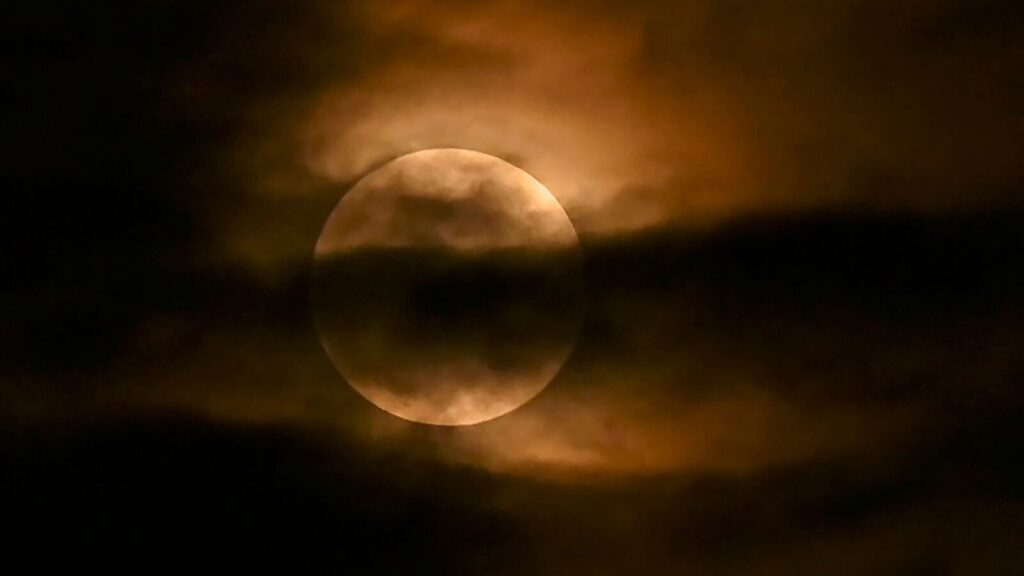The lunar eclipse in 2023, is scheduled for October 28, 2023. This celestial event will commence at 11:31 PM and conclude at 3:36 AM on October 29, 2023. The moment of greatest eclipse is anticipated at 1:45 AM on October 29. This lunar spectacle will be observable from India. During the eclipse, the Moon will undergo a striking transformation, taking on a mesmerizing reddish-brown hue. It’s important to note that this eclipse will be of the partial lunar variety. The Ministry of Science has issued an official statement confirming the eclipse’s occurrence on the night of October 28th and the early hours of October 29th, 2023.
How does a lunar eclipse occur?
A lunar eclipse occurs when the Earth passes directly between the Sun and the Moon, causing the Earth to cast a shadow on the Moon. This astronomical phenomenon is the result of the alignment of the Earth, Moon, and Sun in space.
There are three main parts to a lunar eclipse:
1. Earth’s Shadow:
The Earth has two main components of its shadow, known as the umbra and penumbra. The umbra is the central and darkest part of the shadow, while the penumbra is the outer and lighter part. During a lunar eclipse, the Moon passes through one or both of these parts of Earth’s shadow.
2. Penumbral Eclipse:
When the Moon passes through the Earth’s penumbral shadow, it may experience a subtle shading, but it is often hard to notice with the naked eye. This phase of the eclipse is known as a penumbral eclipse.
3. Umbral Eclipse:
The more dramatic and noticeable phase of a lunar eclipse is when the Moon moves into the Earth’s umbral shadow. There are two types of umbral eclipses:
a. Partial Lunar Eclipse: In a partial lunar eclipse, only a portion of the Moon passes through the Earth’s umbra. This results in a section of the Moon appearing darkened while the rest remains in direct sunlight.
b. Total Lunar Eclipse: In a total lunar eclipse, the entire Moon passes through the Earth’s umbral shadow. During this phase, the Moon can take on a reddish or coppery hue. This reddish color is due to Earth’s atmosphere scattering and refracting sunlight, with longer wavelengths (red and orange) being bent and reaching the Moon, while shorter wavelengths (blue and green) are scattered.
The exact appearance and duration of a lunar eclipse can vary based on the Earth’s position in its orbit and the alignment of the three celestial bodies. Lunar eclipses are safe to observe with the naked eye and do not require special protective equipment, unlike solar eclipses. They are often a fascinating and beautiful astronomical event that can be observed from various locations on Earth during the night.
also read other news :
What is a Chandra Grahan? Mystery of Lunar Eclipses !!
Is it safe to watch a lunar eclipse with the naked eye?
Cultural and Religious Beliefs Surrounding Lunar Eclipses !!
What is the astrological significance of a Chandra Grahan?
How Often Do Lunar Eclipses Occur : Frequency and Visibility
Can a Chandra Grahan be predicted in advance?
What equipment do I need to observe a lunar eclipse?
How does a Chandra Grahan differ from a Surya Grahan (solar eclipse)?
What are some popular myths or misconceptions about lunar eclipses?
